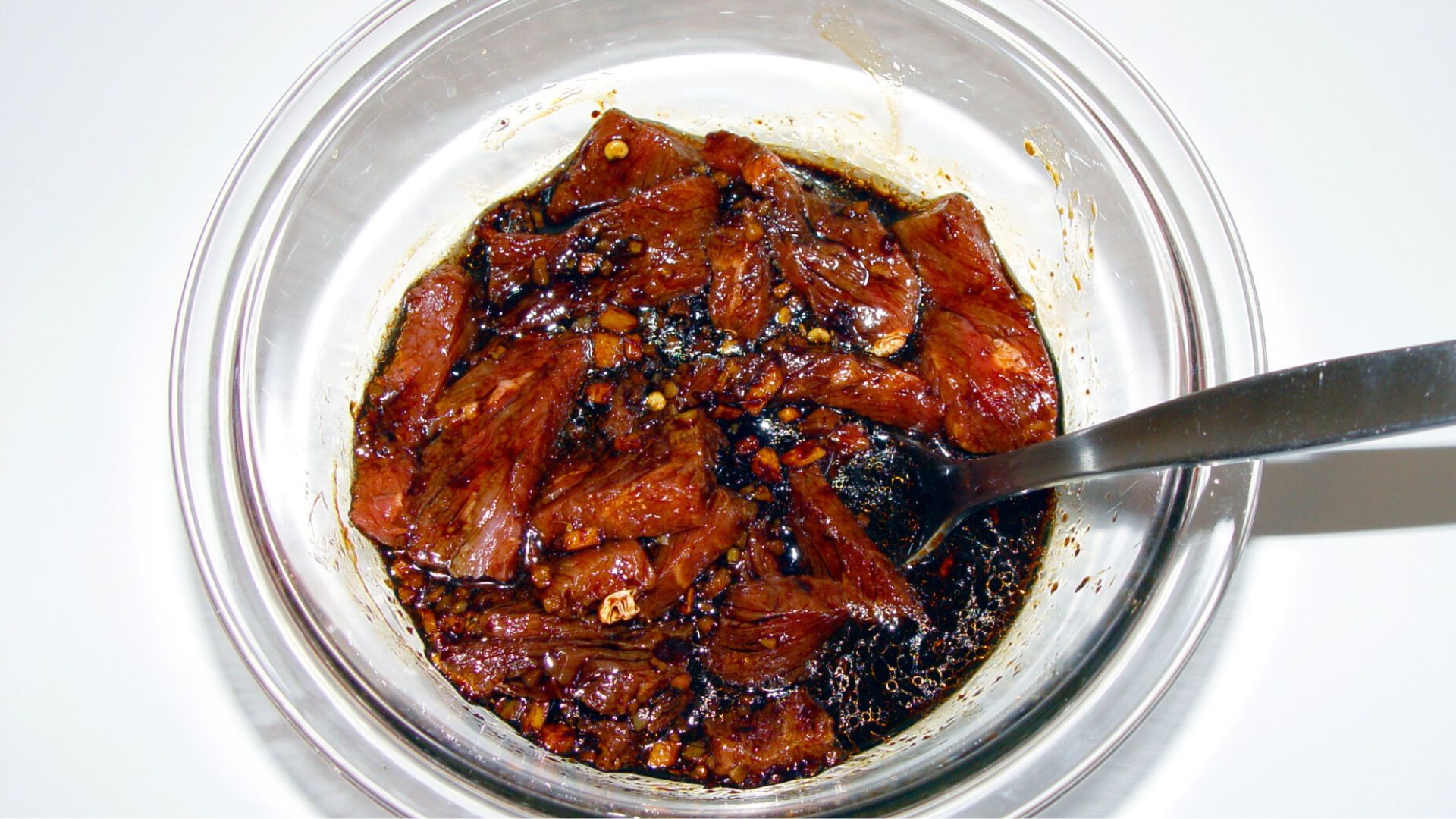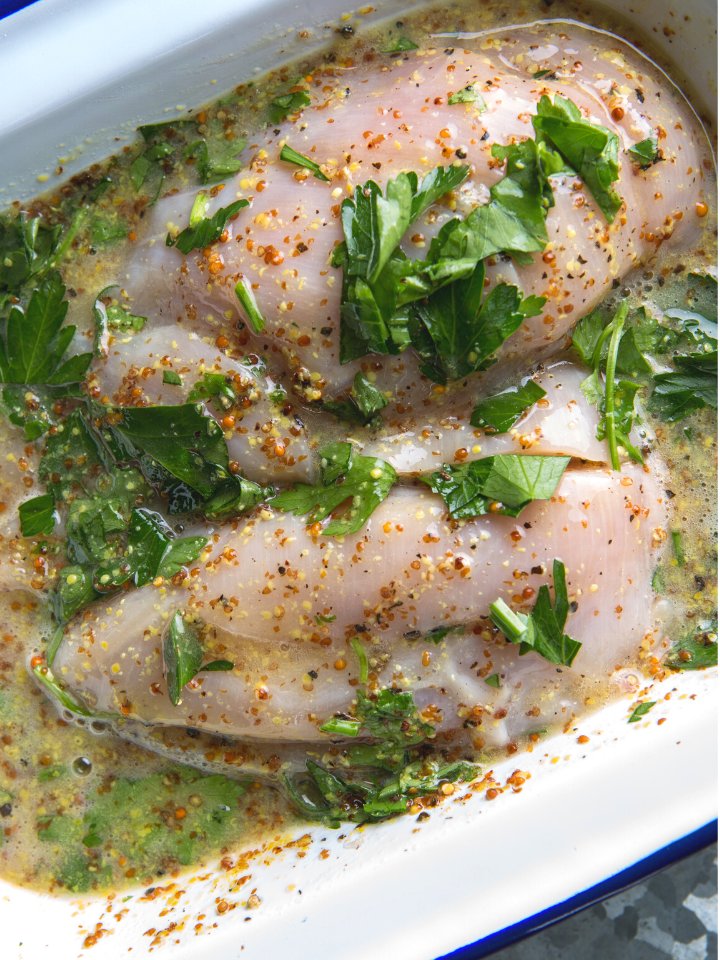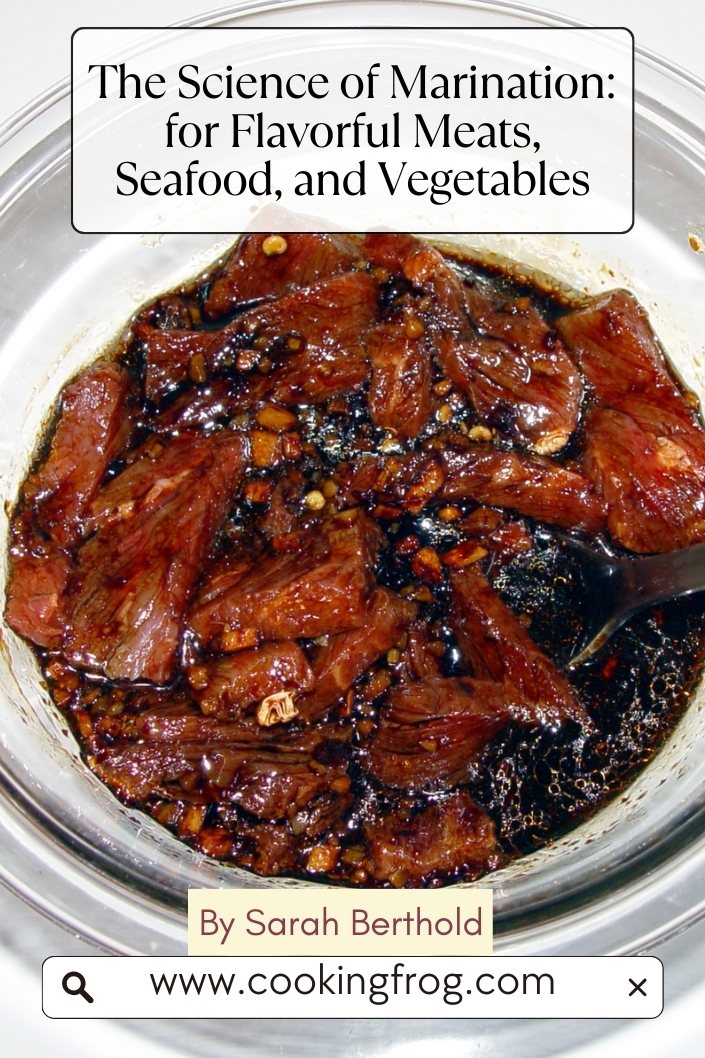Welcome to the world of marination, a culinary technique that promises to transform your everyday meals into extraordinary feasts. Whether you’re a seasoned chef or a home cooking enthusiast, understanding the power of a well-crafted marinade is key to unlocking deep, complex flavors in your dishes.
From tenderizing tough cuts of meat to infusing vegetables with aromatic herbs and spices, this guide will lead you through the art and science of marination. Prepare to elevate your culinary skills and delight your palate with flavors you never imagined possible!
The Science of Marination
Delving into Marination Mechanics: Marination is a culinary alchemy where science and flavor converge. When food is soaked in a seasoned liquid, a transformative process begins. The acidic components of the marinade, such as citrus juices, vinegars, or wine, start breaking down the proteins in the food, making it more tender. This tenderization is particularly beneficial for tougher cuts of meat, turning them into succulent delights.
Flavor Infusion: But marination isn’t just about tenderizing; it’s a flavor-infusion journey. The oil in the marinade, whether it’s olive, sesame, or another variety, helps to carry fat-soluble flavors from herbs and spices into the food. This creates a depth of flavor that mere surface seasoning can’t achieve.
Balancing Act: Achieving the perfect marinade is about finding the right balance. Too much acid can overly soften the food, affecting the texture, while insufficient acidity might not tenderize effectively. Similarly, the right combination of herbs and spices can elevate the dish, whereas an imbalanced mix might overpower the natural flavors of the food.
Penetration and Effectiveness: The penetration of a marinade is limited, reaching only a few millimeters into the meat. This method works best with thinner, flat cuts or cubed or sliced meat. For instance, in a ginger, honey, and soy sauce marinade, the ginger and honey flavor remains on the surface, while the salt in soy sauce can penetrate deeper.
Role of Salt and Oils: Salt in marinades draws out liquid from the meat through osmosis, then allows the brine to be reabsorbed, breaking down muscle structures and drawing water-soluble flavors, like onions and garlic, deeper into the meat. Oils transfer fat-soluble flavors from seasonings such as herbs, chilis, and certain spices onto the meat’s surface.
Time and Technique Matter: The duration of marination is crucial. While some foods benefit from long soaking periods, around 24 hours, others require just a brief encounter with the marinade to achieve the desired effect. The size and type of food also play a role in how it should be marinated.
By understanding the science behind marination, you can not only add incredible flavor to your meals but also transform their texture and appeal, turning simple ingredients into culinary masterpieces.
Types of Marinades and Their Uses:
- Acidic Marinades: These include vinegar, citrus juices, and wines. They are effective in tenderizing meat by loosening protein bonds.
- Dairy-Based Marinades: Utilizing ingredients like buttermilk or yogurt, dairy marinades tenderize meat through calcium, which activates enzymes in the meat.
- Enzyme Marinades: Containing ingredients like kiwi, papaya, and pineapple, these marinades use enzymes to break down and tenderize meat, though they can dry out the meat if used for too long.
- Wet Marinating: This involves soaking meat in a liquid containing salt, sugar, spices, and herbs. The meat is typically submerged for a short time and refrigerated.
- Dry Marinades (Dry Rubs): These use a mix of dried herbs and spices to flavor the meat. Unlike wet marinades, salt can be added to dry marinades to help break down meat proteins and absorb flavors.
- Wet Rubs: These pastes combine spices and herbs and are coated on the meat, creating a thin layer of flavor before cooking.
Impact on Taste, Texture, and Moisture: Marinades can significantly enhance the flavor, adding spice, smoke, or sweetness as desired. They also improve texture, softening lean meats and making tougher cuts more palatable. Additionally, marination is effective for adding moisture and tenderness to meats that might otherwise dry out when cooked, similar to brining but with a wider array of flavor components
Tailored Marination for Every Food Type
Meats: Beef, Chicken, Pork
- Beef: Opt for robust marinades with ingredients like soy sauce, Worcestershire sauce, garlic, and rosemary. These enhance the meaty flavors.
- Chicken: Lemon juice, garlic, and herbs like oregano or thyme create a light yet flavorful marinade, perfect for poultry.
- Pork: A mix of apple cider vinegar, brown sugar, and Dijon mustard offers a balance of sweetness and tanginess, complementing pork’s richness.
Fish and Seafood
- Fish: Use gentle marinades with lemon or lime juice, dill, and a touch of olive oil to add flavor without overpowering the fish.
- Seafood: For shrimp or scallops, a mix of garlic, parsley, and lemon zest works well. Marinate briefly to maintain texture.
Vegetables
- General Veggies: A blend of balsamic vinegar, olive oil, garlic, and Italian seasoning can enhance most vegetables.
- Specialty Veggies (like mushrooms or zucchini): Soy sauce, sesame oil, and a hint of ginger offer an Asian-inspired twist.
Cheese
- Firm Cheeses (like Feta or Halloumi): A marinade of olive oil, lemon zest, and herbs like rosemary or thyme can add depth.
- Soft Cheeses (like Goat Cheese): Use lighter flavors like basil and a milder vinegar to complement the cheese’s texture.
What is Asian Marinade?
Exploring the Richness of Asian Flavors: An Asian marinade is a blend of ingredients commonly used in Asian cuisine that imbues food with a distinctive, rich flavor profile. Characterized by a harmonious balance of sweet, savory, spicy, and umami elements, these marinades often include ingredients like soy sauce, sesame oil, ginger, garlic, and various Asian spices and herbs.
Key Components:
- Soy Sauce: Provides a savory, umami base.
- Sesame Oil: Adds a nutty, aromatic quality.
- Sweeteners: Ingredients like honey or brown sugar balance the savory notes.
- Acids: Rice vinegar or lime juice adds a subtle tang.
- Spices and Herbs: Garlic, ginger, green onions, and cilantro are commonly used for freshness and zest.
Asian marinades are versatile, used in a range of dishes from grilled meats and seafood to tofu and vegetables. The combination of these components results in a marinade that’s rich in flavor and perfect for adding depth to a variety of dishes.
Delighted by these marinating insights? Imagine the mouth-watering meals your friends could create with these tips! Share the beauty and wisdom by pinning the image below to your Pinterest
Exploring Other Types of Marinades
Beyond Asian marinades, there’s a world of flavors to explore:
Mediterranean Marinade
Characterized by olive oil, lemon juice, garlic, and herbs like oregano and basil. Perfect for chicken, fish, and vegetables.
Latin American Marinade
Typically includes citrus juices like lime, along with spices like cumin and chili peppers. Ideal for beef and poultry.
Indian Marinade
Combines yogurt with aromatic spices like turmeric, cumin, and garam masala. Excellent for chicken and lamb.
Caribbean Marinade
Features a blend of fruity flavors like pineapple or mango juice, along with spices and chili. Great for pork and seafood.
Each of these marinades offers a unique way to infuse food with regional flavors, turning ordinary ingredients into delectable dishes.





